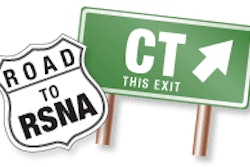Thursday, November 29 | 10:30 a.m.-10:40 a.m. | SSQ15-01 | Room S102C
Dual-energy CT (DECT) with rapid kV switching significantly reduced metal artifacts in an animal model, regardless of whether metal artifact reduction software (MARS) was used, according to a study from Canada.The Hospital for Sick Children in Toronto recently installed a CT scanner with metal artifact reduction software and the capability of producing virtually monospectral studies at high kilovoltage peaks, which in theory should reduce metal artifacts, researcher Heba Takrouri told AuntMinnie.com.
"Since we are a pediatric hospital and the radiation dose is an issue, I chose to study this issue in a piglet model to evaluate the efficacy of metal artifact reduction and to evaluate the dose delivered and compare it with the conventional CT imaging," said Takrouri, who currently works at McMaster Children's Hospital in Hamilton, Ontario.
The researchers examined four young piglets using a single-energy pediatric protocol after insertion of two 5.5-mm steel scoliosis rods in the paraspinal region. They then extrapolated images at five different monoenergetic levels (64-105 keV) with and without artifact reduction software, and graded the extent of metallic artifacts and image interpretability. The group also performed a Hounsfield unit analysis of artifact density.
In exams without artifact reduction software, higher-energy reconstruction reduced artifacts and improved interpretability significantly. Artifact density increased without the software. There were no differences in image quality scores or density with use of the artifact reduction software. At similar monoenergetic levels, the use of dual-energy CT reduced artifact and enhanced interpretability regardless of whether or not the software was used.



















